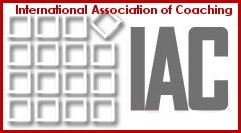Category: ICF Coaching Competencies
 Looking for the Christian Life Coach Training program that is right for you?
Looking for the Christian Life Coach Training program that is right for you?Thanks again to Linda Hedberg for the 2011 Edition of The Complete Guide to Christian Coach Training , a book that will provide you with unbiased information that will help you to make a well informed decision. She gives the reader all the information in a consolidated and well organized, easy-reference list of fifteen (15) Christian life coach training programs, with profiles on each program and a comparison table for quick reference. Yes, Christian Coach Institute is among the prestigious list of well respected training programs listed in this 3rd edition of the Complete Guide to Christian Coach Training.
Gary Collins, PHD, Author Christian Coaching: Helping Others Turn Potential into Reality says “At least once every week somebody writes to ask me where they can get high quality, Christian coach training. Linda Hedberg’s unique and very practical book gives the answers. Concise, informative, relevant and easy to understand, this valuable guidebook says all we need to know about competent coach training from a Christian perspective. I am honored to recommend it enthusiastically. “–Gary R. Collins, PhD, Author Christian Coaching: Helping Others Turn Potential into Reality.
What questions do you have about Christian Life Coach Training Programs? If you would like an unbiased comparison, be sure to check out Linda’s easy to download e-book. And then you can spend your time in prayer and seeking God’s guidance for the program that is right for you.
-
 If you are seeking coach training and certification, you have many different avenues. The good news is, if your training is based on the core coaching “skills” taught by either IAC or ICF, you will find that their coaching “masteries” or “competencies” are in alignment. Some people get confused and assume there are differences in the skills that are taught, but actually these two organizations’ core coaching skills align.
If you are seeking coach training and certification, you have many different avenues. The good news is, if your training is based on the core coaching “skills” taught by either IAC or ICF, you will find that their coaching “masteries” or “competencies” are in alignment. Some people get confused and assume there are differences in the skills that are taught, but actually these two organizations’ core coaching skills align.This post is the first in a series where we will look more closely at the definitions of the 9 IAC Coaching Masteries and the 11 ICF Coaching Competencies. You may wonder, why doesn’t IAC have 11 Coaching Masteries instead of 9? The first 2 ICF Competencies are around the ethical guidelines, standards and coaching agreement. At IAC, these are taught right up front before getting into “skills”. The IAC Ethical Standards are just as important in the training; it is simply a separate stand alone topic. Personally, I like teaching the ethics and standards topics prior to the coaching skills to emphasize the critical importance of ethics and professionalism.
 Let’s look at IAC Mastery 1 – Establishing and Maintaining a Relationship of Trust defined as “to ensure a safe place for personal growth, discovery and transformation”. One can see it aligns beautifully with ICF Competency 3 – Establishing Trust and Intimacy with the Client which is defined as “ability to create a safe, supportive environment that produces ongoing mutual respect and trust”.
Let’s look at IAC Mastery 1 – Establishing and Maintaining a Relationship of Trust defined as “to ensure a safe place for personal growth, discovery and transformation”. One can see it aligns beautifully with ICF Competency 3 – Establishing Trust and Intimacy with the Client which is defined as “ability to create a safe, supportive environment that produces ongoing mutual respect and trust”. The effect and key elements of successfully demonstrating this coaching mastery or core competency is the same. What will a coach see in a client when the skill is used successfully? A coach will see the client opening up to share concerns or fears, sharing bold aspiration and dreams, acknowledging emotions and being receptive to the coach.
Both ICF and IAC are the two most recognized and respected coach certification international organizations. Use the links below to learn more about the International Coach Federation (ICF) and the International Association of Coaching (IAC) certification requirements.
What are the ICF Certification requirements?
What are the IAC Certification requirements?
-
 When working with corporate coaches who mainly coach employees for performance improvement, one of the first myths to address is “coaching is giving feedback”. Not! Feedback is only part of the process in coaching for performance.
When working with corporate coaches who mainly coach employees for performance improvement, one of the first myths to address is “coaching is giving feedback”. Not! Feedback is only part of the process in coaching for performance.A frequently asked question is “How can you simplify the process of giving feedback?”
I suggest the following easy 4 steps:
1. Ask for permission to give feedback. (ex. John, may I talk with you about the meeting this morning?” ) Yes, you read correctly. I suggest you ask the employee if you can speak with him about the situation. And what if the employee says no? Well, asking permission lets the employee know up front that you have feedback and if you consistently ask, whether it is constructive or positive, this builds trust between you and the employee. If the only time you ask to give feedback is when it is constructive, then you are right, the employee is going to think “oh here we go again – always something negative”. Ask consistently and build a trusting relationship. And, it is ok if the employee says “now is not a good time” because you can let them know there needs to be time set aside, and you can respect that now may not be the best time. Follow up with, “when will be a good time, this is important.” Get it on the calendar.
2. Describe the employee behavior, whether positive or constructive. For example, “From my observation, John, when you posted the powerpoint on the resource page, you (fill in the blank – describe what employee did)
3. Describe the impact (did it have a negative or positive impact). In one or two sentences, no need to go on and on. Make your point.
4. Either ask for response or encourage to continue.
If constructive: Ask for a response and then be silent – let the employee respond ( ex. How can you approach it differently next time?) If positive feedback, then simply encourage the behavior to continue (I appreciate the extra time. Thank you) And, remember all constructive feedback should be given in private and that goes for the corporate world or in a family situation, like giving feedback to your children. Keep the constructive feedback focused on solutions and not the person.
If positive: Positive feedback, on the other hand, is very acceptable in public, a pat on the back is always good to hear among a peer group. Yet, some still prefer to receive positive feedback in private. Not all employees are equal in how they receive praise.. get to know each employee .. if in doubt, ask. Oh, and for the DISC fans out there, if you are a manager of parent of a High I, they love to receive appreciation in public. In fact, it is one of the best ways to motivate a High I…. appreciation.
Stay tuned for future article on how to receive feedback.
-
 My dear Grandma Clara was a bit of a Christian Life Coach and never knew it. She had the gift of knowing how to ask a wonderful, thought provoking question and then resting in silence, allowing a 12 year old to discover. I was a chatty child and so many times, I remember how she would gently lean down into my face and take hold of both my ears, and squatting down at face level, she would say so softly, “Janice, God gave you two ears and one mouth, and He intends for you to listen twice as much as you talk.” Oh, such a wise and gentle spirited woman. Thank you, Grandma Clara!
My dear Grandma Clara was a bit of a Christian Life Coach and never knew it. She had the gift of knowing how to ask a wonderful, thought provoking question and then resting in silence, allowing a 12 year old to discover. I was a chatty child and so many times, I remember how she would gently lean down into my face and take hold of both my ears, and squatting down at face level, she would say so softly, “Janice, God gave you two ears and one mouth, and He intends for you to listen twice as much as you talk.” Oh, such a wise and gentle spirited woman. Thank you, Grandma Clara!Good coaching is comfortable with silence, giving the client time to reflect and respond which is a critical skill for coaches to master. There is no need to jump in thinking you are helping. Some of the most powerful moments in coaching take place in the silence. It is here that a client reflects, processes, discovers, and has many aha moments. There are golden moments when a coach can hear more than the words spoken for the power is behind the words that remain unspoken. Most importantly, it is in these moments of silence and reflection that our role is to allow the Holy Spirit to do His work in the client and this is between the client and the Holy Spirit. ….. “Peace, Be Still and know that I am God…”
As an IAC Licensed Coaching Masteries School, we train our students to give full attention to the words, nuances, and the unspoken meaning of our client’s communication.
What is your client saying in the silence? How are you coaching in the silence?